“Gladiator II” Production Designer Arthur Max on Rebuilding a Decadent, Debased Ancient Rome
In the first installment of our conversation with Gladiator II production designer Arthur Max, he talked about making Ridley Scott’s sequel on an even bigger scale than the original film and staging a naval battle sequence in the desert of Morocco for the opening sequence. Now, let’s find out what it took to flood the Colosseum to recreate the mock naval battle in the third act.
Did you use mostly local crew on the sequel?
We had many countries represented on the crew. The English art department did the construction and set decorating; the graphics department built the ships in pieces to be shipped to Morocco and Malta. We also constructed molds for the architecture and shipped those to Malta. We had the Maltese crew in Malta, an Italian crew in Malta and Morocco, a Croatian crew in Croatia and Morocco, an Australian supervising art director, a concept artist, and some art directors are Germans, and some Spanish sculptors and construction as well. One of the concept artists and I are American. So, it was pretty much the United Nations on the set.
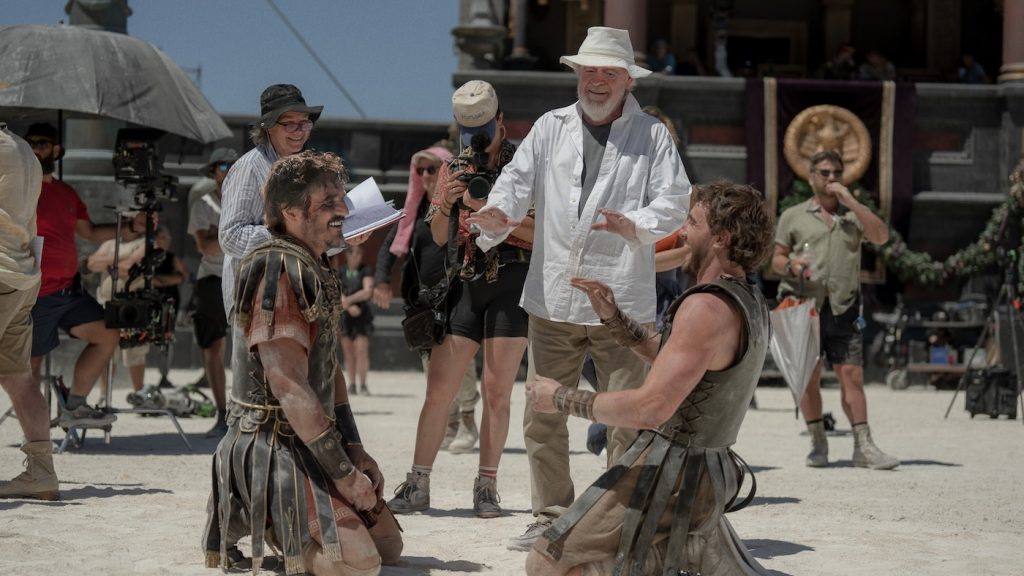
So many ornate chariots were on display throughout this film. Can you talk about some of them?
We had the imperial chariot for the Emperors, the war chariots, Lucilla’s (Connie Nielsen) carriage, and Macrinus’ was all in gold. The special chariots were built in Morocco, and some were shipped to Malta. Acacius was the great hero when he returned victorious from Numidia, so he had his own chariot and two escort chariots. The army chariots were modified from rentals. One was actually Commodus’ chariot, which we modified from the first movie. Somebody bought that and kept it, and we recycled it. The slave wagons were like cages on wheels for the gladiators. We also made half a dozen Sedan chairs for the slaves to carry people around, as they did back then. For the street traffic, we had supply wagons and carts to busy up what was one of the biggest cities, if not the biggest city in the world at the time. In some of the water and aerial shots, you can see how densely populated the streets are in the practical shots, with lots of wagons and chariots zipping around. They used the chariots like taxis back then.
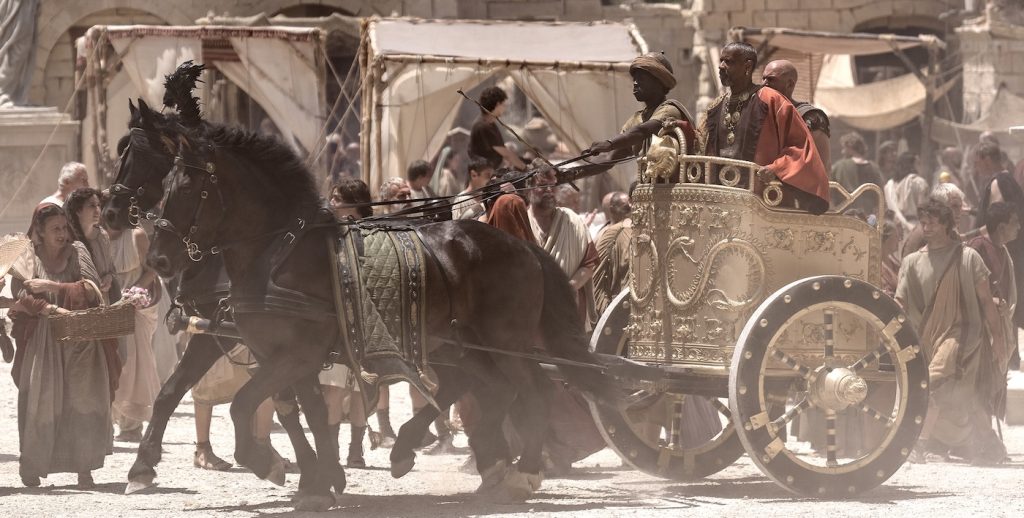
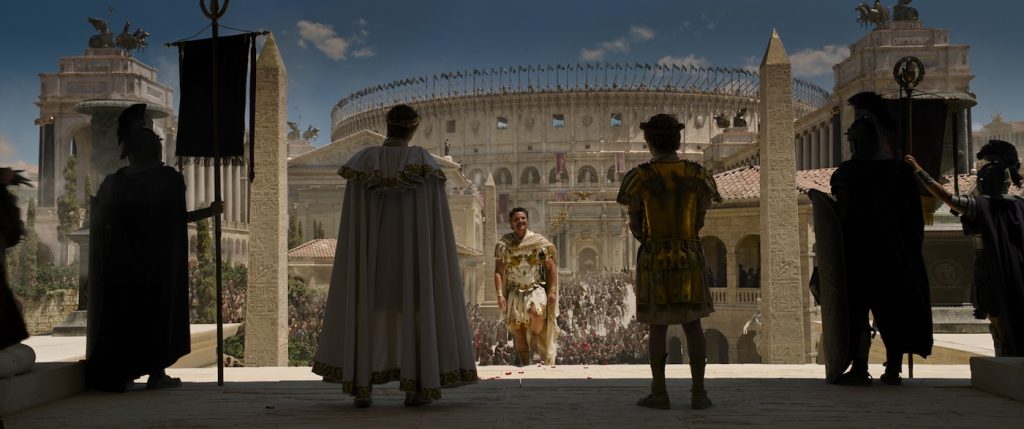
Did you really flood the Colosseum set for the mock naval battle, where the gladiators were equally likely to be killed by sharks (yes, sharks!) in the water, arrows, or swords?
They really did the mock naval battles in ancient Rome, flooding the Colosseum to stage famous historical sea battles. We built two more boats for this sequence, which weren’t as big as the warships: those were over 100 feet long, but these were about 65 feet. One was the Athenian boat and the other, the Persian boat, to recreate the Battle of Salamis [in 480 BC during the Greco-Persian Wars]. We used the same mechanism in Morocco to move these boats into the Colosseum. Because of their size, the height of the sails, and mass, I had to raise the Coliseum five feet higher than it was in the first movie to accommodate the digital water line. Due to the height of the sail, the main entry arch had to go up 20 feet. We only had chariots and people coming through in the first movie, but now, we had enormous ships coming through the archway. So, it was a bit of an engineering upgrade.
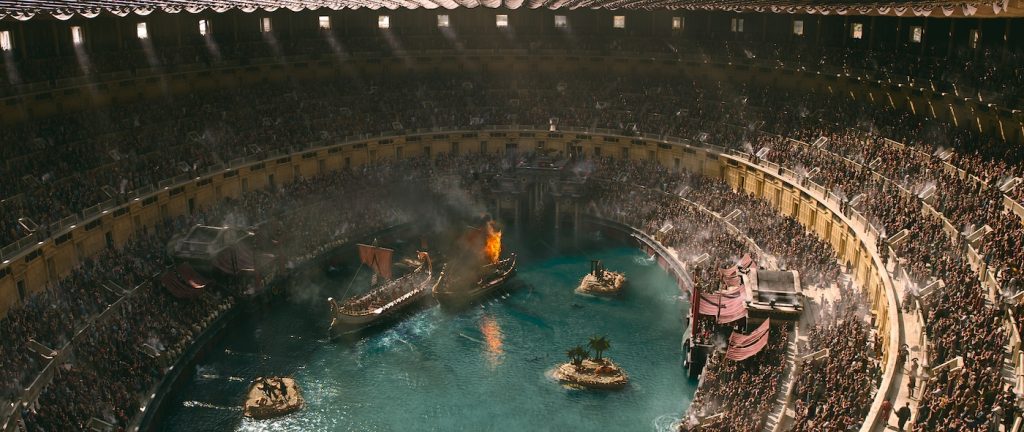
Can you elaborate on raising the platform to work with the digital water line?
We raised the whole Colosseum five feet off the ground, so when the ships came in, they were on wheels on hydraulic platforms, which were up five feet, so you don’t see any of that. The Colosseum was plus five feet, plus the height of increase on the arch to get the boats in. The velarium had to go up to accommodate all that and leave enough room for the cameras. Otherwise, you’d hit your head on the velarium when you were at the top of the arch. Everything was raised vertically, but the footprint stayed pretty much the same as in the first movie because of the space available. It’s like shoehorning all the elements into a confined space.
What was the second partial replica of the Colosseum used for?
We needed water for all the stunt work, with people falling off the ships and crashing into the water, and we had cameras in the water at a low level for visual effects references. As luck would have it, down the road from Fort Ricasoli is one of the biggest water tank studios in the world [Malta Film Studio]. The tank is a bit bigger than a football field and 8-12 feet deep. We built a piece of the Colosseum, particularly the Empress box and the surrounding tiered seating, not the 60% scale we discussed earlier, but just a small area to replicate the crowd’s reactions. We actually had the water in that one to do all the stunt work, build some islands, and add scenery. We also did the interiors of the Roman slave ships that brought Lucius and the slaves from Numidia back to Rome. It was quite a puzzle figuring out where we would work in the water, where we would be in the dry, and how all this fit together with the visual effects in post. We didn’t have this consideration on the first movie. The engineering specifications were more demanding on this film.
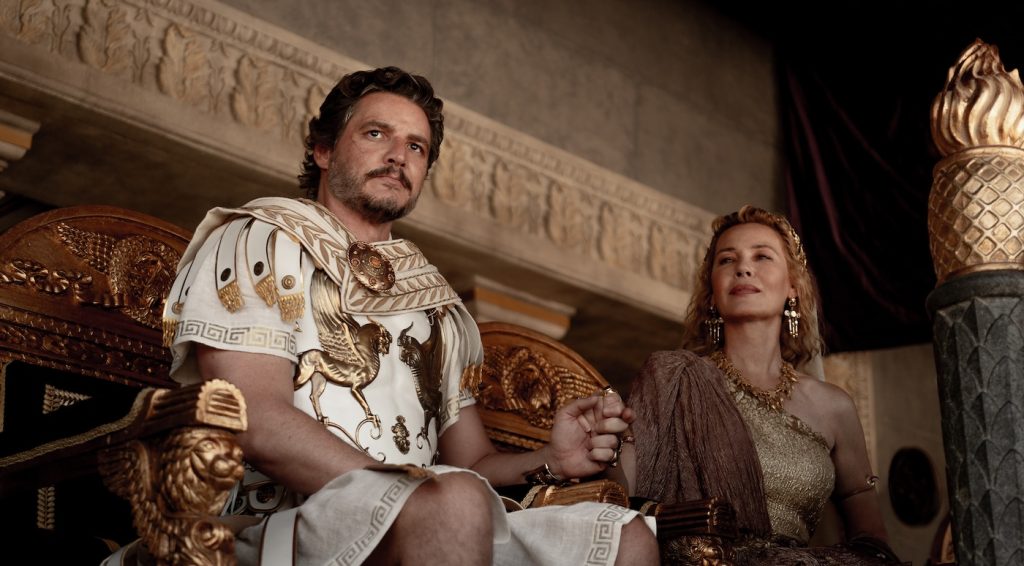
49 days of filming sounds pretty short for this scale and scope!
On the big days, we had 12 cameras plus a couple of drones. Ridley is one of the great choreographers of multiple cameras. Not many directors can just do a couple of takes with 12 cameras and move on. That’s how we were able to shoot it in 49 days, which is a great achievement from a pure production point of view.
Gladiator II is playing in theaters nationwide.
For more on Gladiator II, check out these stories:
Maximus Effort: “Gladiator II” Production Designer Arthur Max’s on Creating Colossal Constructions
“Gladiator II” Screenwriter David Scarpa on the Herculean Task of Writing a Worthy Sequel
“Gladiator II” Enters International Arena With a Powerful Opening Weekend
Featured image:



